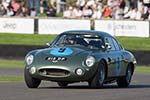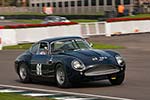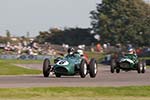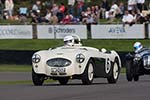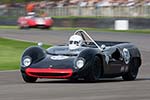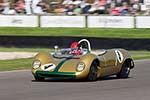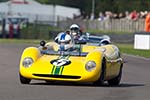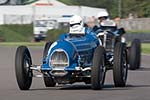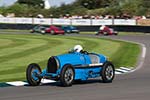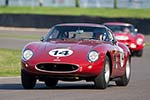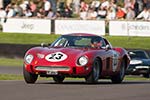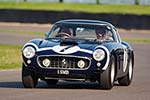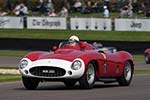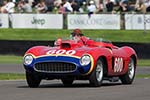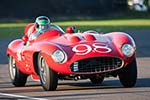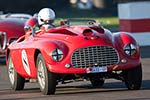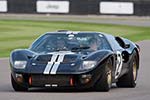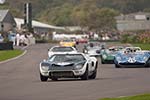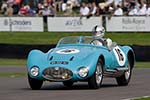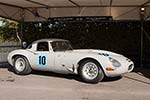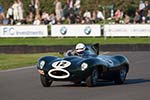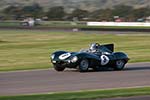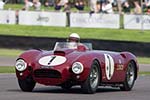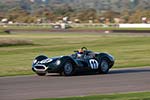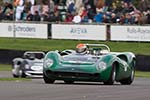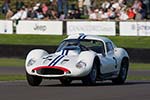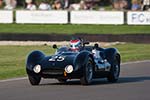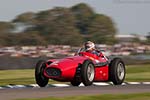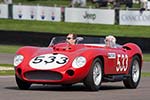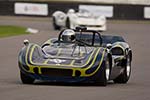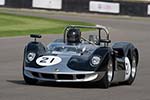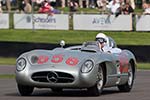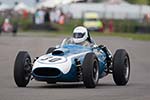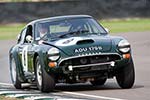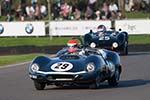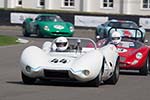Introduction
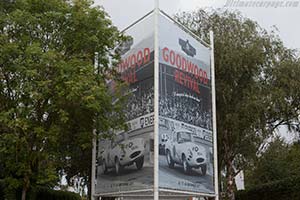
The annual Goodwood Revival is without a doubt the world's largest stage show; invited to dress up in contemporary outfit the spectators themselves are also part of the cast and decor. Despite the huge popularity of the event, host Lord March and his excellent team each year try to add new elements to keep things fresh even for the most seasoned visitors. One of the most recent additions is the period 'high street' with a Tesco's supermarket stocked with food and drinks in very correct 1960s packaging. As always the familiar program was supplemented by several anniversary displays and races. Among the celebrations were the 75th anniversary of the Spitfire and 100 years of Ford of Britain. There was also a two-driver race exclusively for Jaguar E-Type's marking the 50th anniversary of the iconic model. Breaking with tradition, the Revival honoured a driver that is no longer with us; Juan Manual Fangio. Not that a reason is needed to pay tribute to one of the greatest drivers ever but 'Il Maestro' would have been 100 years old in 2011.
All dressed up, our photographers spent the better part of four days at the high-speed track in the South of England to capture all the activities both on the ground and in the air. The result is this spectacular
320-shot gallery.
The Goodwood Revival Sale

Founding sponsor of both Goodwood events, Bonhams was once again the Revival's auction partner. While still in the same location, the Bonhams tent had been completely refreshed on the inside. Probably inspired by the auctioneer's North American rivals, the changes certainly were an improvement. Appropriately heading the sale was a highly original competition E-Type that had been campaigned in period in 'Semi-Lightweight' specification. Offered with an 'estimate on demand', it sadly failed to sell during the auction. Efforts to bring the highest bidder and vendor together post-sale were, however, successful and the lovely E-Type did change hands, for an undisclosed amount. Several other lots that had initially failed to sell on Friday evening did eventually find a new owner in similar fashion. These post-sale transactions represented almost a third of the 6.5 million pound auction. Topping the sales during the actual auction were a Ferrari 365 GTS/4 'Daytona Spider' (595,500 Pounds) and one of just four surviving 1908 vintage Rolls-Royce Silver Ghosts (485,500 Pounds).
Spitfire 75th Anniversary

When the Goodwood Motor Circuit opened in 1948, it used the perimeter road of what was RAF Westhampnett during the War. Little has changed since and Goodwood is still an active airfield. Accordingly airplanes have always formed an intricate part of the Revival meetings with spectacular demonstration flights and a 'concours d'elegance' on the ground. This year the 75th anniversary of the first flight of the iconic Spitfire was celebrated at what was once a Spitfire base. The R.J. Mitchell designed fighter proved instrumental in the defence of the country in the 'Battle of Britain' and in various guises was extensively used throughout the War. With its easily recognisable elliptically shaped wings howling Rolls-Royce engine, the Spitfire is still a crowd favourite. To mark the anniversary, a record breaking demonstration of no fewer than 14 examples was scheduled for Sunday afternoon. Unfortunately these efforts were thwarted by poor weather conditions but nevertheless the ten Spitfires that were airborne captured the imagination of all on the ground. In the 'Spirit of Aviation' concours, a replica of the very first Spitfire was also proudly displayed. Another impressive airplane on display was a B17 bomber, which we had been fortunate enough to see fly in on Thursday.
Earl of March Trophy

In the late 1940s a new entry level racing class was introduced with a 500 cc displacement; Formula 3. This proved instrumental to bring talents like Stirling Moss and manufacturers like Cooper to the fore. In fact, Moss won the Formula 3 race at the very first meeting at Goodwood in a Cooper. Using readily available motorcycle engines, the class also inspired some very unusual designs. For this year's Earl of March Trophy, the organisers tried to invite as many of these unique machines together with the more conventional Coopers and Kiefts. Certainly the strangest was the McCandlass, which featured a very rudimentary all-wheel drive system with chains that ran through the central backbone. This was the second of two built and the sole survivor; the original had debuted at Goodwood back in 1953 and featured handlebars instead of a steering wheel. Other highlights included Duncan Rabagliatti's Trimax and Rudolf Ernst's Whitfill, which looked like scaled down versions of a pre-War Auto Union and an Indy Roadster respectively. Run on a fast drying circuit, the Earl of March Trophy was won by Sam Wilson in a Norton engined Kieft. He would later clinch the double by winning the Chichester Cup for mid-engined Formula Juniors in a Cooper.
St Mary's Trophy

An ever popular race at the Revival is the St Mary's Trophy for touring cars. It is run in two heats with big name drivers out in the first part and the owners in the second. The final result is based on the aggregate times of both heats. Each year a different period is chosen and in 2011, the race was run for 1960s machinery. The race promised to be a David vs Goliath with the diminutive (relatively speaking) Minis and BMW 1800s pitched against three Ford Galaxies. In his unique sideways fashion Barrie Williams had claimed pole in one of the big V8 Fords for the celebrity race but unfortunately had to retire early on with a broken prop-shaft. That handed the lead to Paul Radisich in a sister car, who managed to fend off Jackie Oliver in a BMW despite suffering brake problems in the final laps. Usually pitched against each other in LMP1 machinery, the fight for third was between Tom Kristensen in a Lotus Cortina and Darren Turner in a Mini. The eight-time Le Mans winner came out on top after a spectacular but very clean battle. In the second heat the tables were turned in favour of Richard Shaw in the BMW that Oliver had raced to second on Saturday. Despite some brave moves early on, Nick Swift had to settle for third in this race in the Mini he shared with Turner. Second was for the Galaxie, now in the hands of James Wood, that had won the first race.
100 years of Ford of Britain

In 1911, the Ford Motor Company set up shop in England, initially to assemble parts shipped from North America. In the years that followed the British factories started production of models specific to the European market. For many years the Ford of Britain Dagenham facility was the largest Ford factory outside of North America. To mark the 100 years of Ford of Britain a parade of 100 British built Ford vehicles was assembled, ranging from early Ts to army vehicles and some of the iconic 'blue oval' racers of the 1960s. Among them was a Model T with which had been used in an attempt to summit Ben Nevis (Britain's highest mountain). When the car failed to reach the top under its own power, the crew decided to disassemble the T and carry it to the summit in pieces. Once there the car was re-assembled and in quite a laborious way made good on Ford's original promise. Only out during the first day was the actual GT40 Mk II that had taken Ford's maiden victory at Le Mans just over 45 years ago. Its place in the parade was filled with several sister cars including two early prototypes. These were also raced in the Whitsun Trophy, which featured no fewer than 9 GT40s.
Fordwater Trophy

Earlier in the year the Festival of Speed already celebrated the 50th anniversary of the Jaguar E-Type with a fantastic sculpture and now the Revival followed suit with a special 45-minute, two-driver E-Type race on Saturday. The event attracted a very strong field with six of the twelve 'Lightweight' models buily competing in the race and a further two on display in the paddock. The rest of the field consisted of E-Types that were raced in period and/or built to 'Semi-Lightweight' specification. By quite a margin, pole for the race was for Adrian Newey's rather special Lightweight, which he shared with Formula 1 ace Gerhard Berger. The numerous tweaks made to the historically important car has made it subject of fierce debate in the paddock for several years. In the race Berger easily etched clear of Jon Minshaw in the Semi-Lightweight he shared with Martin Stretton and Emmanuele Pirro in the Lightweight that was co-driven by Desire Wilson. Minshaw pitted early and fully familiarised with the track, Stretton managed to pass Wilson on her first lap and after a safety car period, he pushed Newey so hard that the talented designer ran wide. This allowed Minshaw and Stretton to score a very popular win. The race was marred by a big crash late in the race after Wilson ran out of road at the chicane.
RAC Tourist Trophy

Sunday's feature race was the RAC Tourist Trophy Celebration for 1960s GT machines. Traditionally attracting a field of staggering value, this year's edition had more slots to fill due to the absence of the E-Types. Among the 'new' cars present was Lawrence Auriana's Maserati 151/1, which had been part of the Rosso Bianco Collection for decades and is the sole survivor of three built. After a lengthy restoration process, this was the machine's first competitive outing. It was driven with great verve by Joe Colosacco and Derek Hill, son of 1961 World Champion Phil. Due to some delays following earlier accidents the race was shortened from one hour to 45 minutes. On a damp track, Kenny Brack started on pole in the thundering Cobra Daytona Coupe he shared with Tom Kristensen. The Swede managed to put some distance between him and the rest of the field that was initially headed by Martin Brundle in Nick Mason's Ferrari 250 GTO. He was soon challenged by Hill in the big Maserati, who had skilfully worked his way up the field. Then the heavens opened and we were treated to both a soaking and a masterclass of driving. During what were no doubt the most difficult conditions of the weekend, no driver made a mistake, while still putting in quick laps. Due to the heavy rain, the race was stopped a few minutes early with the well deserved victory going to Brack and Kristensen ahead of Brundle and Mark Hales and the two American Maserati pilots.
Tribute to Juan Manuel Fangio

When he retired from full-time racing at the end of 1957 and the age of 46, the late Juan Manuel Fangio had managed to win five of the first eight Formula 1 World Championships held. On his way to his five championships, he scored 24 victories in the 51 Grands Prix he started. These figures alone explain why the modest Argentinian earned the nickname 'Il Maestro' and why he is still considered one of the greatest drivers of all time. Born in 1911, he would have been 100 this year, which provided a great occasion to pay tribute to the great man. In his honour a parade was assembled of many of the cars he raced, including two used in his early years in Argentina, which were shipped from South America specifically for the Revival. Also on hand were three of the 'Silver Arrows' he campaigned in 1954 and 1955. They were driven by his former Mercedes-Benz team-mates Hans Herrmann and Stirling Moss, and his nephew Juan Manuel Fangio II; a successful racer in his own right. Also on hand were several Ferraris he raced in 1956, including the 860 Monza, which he piloted to victory in that year's Sebring 12 Hours together with Eugenio Castellotti. Perhaps the most evocative of all cars in the parade was the actual Maserati 250F, Fangio used to score he last and arguably greatest victory in, beating the odds and the lap record many times at the 1957 German Grand Prix. This beautifully preserved machine was piloted by Jackie Stewart, who was a close friend of Fangio and had never driven a 250F before.
Final thoughts
Although dreadful weather was predicted for the entire weekend, most of the rain fortunately managed to stay away until the final hours of the weekend. This year's Revival was however stricken by a number of big accidents during both the practice sessions and races. Fortunately only one driver suffered some broken bones but judging from the wrecks that returned to the paddock, it could have been a lot worse. Hopefully the display of skill during the TT race will set an example that will be followed during the following editions of the event. Other than these small stains, the 2011 Goodwood Revival was another classic edition with lots of great action on the track, in the air and throughout the paddock and display areas. If you have missed it, you can catch up with all of it in our packed
320-shot gallery.
|
|
|
|
| |
|
|
|
|
| |
|
|
|
|
| |
|
|
|
|
| |
|
|
|
|
| |
|
|
|
|
| |
|
|
|
|
| |
|
|
|
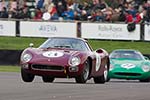
|
|
|
Ferrari 250 LM
|
425

|
| Years of production: |
1963 - 1966 |
| Last updated: |
12 / 18 / 2015 |
|
|
| |
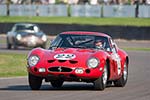
|
|
|
Ferrari 250 GTO
|
536

|
| Years of production: |
1962 - 1963 |
| Last updated: |
12 / 07 / 2015 |
|
|
|
|
| |
|
|
|
|
| |
|
|
|
|
| |
|
|
|
|
| |
|
|
|
|
| |

|
|
|
Ford F3L
|
56

|
| Years of production: |
1968 - 1969 |
| Last updated: |
05 / 19 / 2016 |
|
|
|
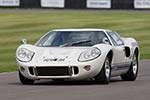
|
|
|
Ford GT40 Mk III
|
53

|
| Years of production: |
1967 - 1969 |
| Last updated: |
09 / 13 / 2012 |
|
|
| |
|
|
|
|
| |
|
|
|
|
| |

|
|
|
Jaguar D-Type
|
240

|
| Years of production: |
1955 - 1958 |
| Last updated: |
08 / 04 / 2016 |
|
|
|
|
| |
|
|
|
|
| |
|
|
|
|
| |
|
|
|
|
| |
|
|
|
|
| |
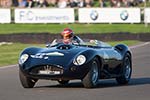
|
|
|
Maserati 450S
|
123

|
| Years of production: |
1956 - 1958 |
| Last updated: |
05 / 28 / 2014 |
|
|
|
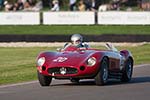
|
|
|
Maserati 300S
|
482

|
| Years of production: |
1955 - 1958 |
| Last updated: |
11 / 10 / 2014 |
|
|
| |
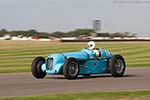
|
|
|
Maserati V8RI
|
61

|
| Years of production: |
1935 - 1936 |
| Last updated: |
09 / 22 / 2014 |
|
|
|
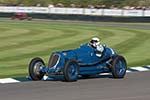
|
|
|
Maserati 8CM
|
120

|
| Years of production: |
1933 - 1935 |
| Last updated: |
05 / 10 / 2017 |
|
|
| |
|
|
|
|
| |
|
|
|
|
| |
|
|
|
|
| |
|
|
|
|
| |

 The annual Goodwood Revival is without a doubt the world's largest stage show; invited to dress up in contemporary outfit the spectators themselves are also part of the cast and decor. Despite the huge popularity of the event, host Lord March and his excellent team each year try to add new elements to keep things fresh even for the most seasoned visitors. One of the most recent additions is the period 'high street' with a Tesco's supermarket stocked with food and drinks in very correct 1960s packaging. As always the familiar program was supplemented by several anniversary displays and races. Among the celebrations were the 75th anniversary of the Spitfire and 100 years of Ford of Britain. There was also a two-driver race exclusively for Jaguar E-Type's marking the 50th anniversary of the iconic model. Breaking with tradition, the Revival honoured a driver that is no longer with us; Juan Manual Fangio. Not that a reason is needed to pay tribute to one of the greatest drivers ever but 'Il Maestro' would have been 100 years old in 2011.
The annual Goodwood Revival is without a doubt the world's largest stage show; invited to dress up in contemporary outfit the spectators themselves are also part of the cast and decor. Despite the huge popularity of the event, host Lord March and his excellent team each year try to add new elements to keep things fresh even for the most seasoned visitors. One of the most recent additions is the period 'high street' with a Tesco's supermarket stocked with food and drinks in very correct 1960s packaging. As always the familiar program was supplemented by several anniversary displays and races. Among the celebrations were the 75th anniversary of the Spitfire and 100 years of Ford of Britain. There was also a two-driver race exclusively for Jaguar E-Type's marking the 50th anniversary of the iconic model. Breaking with tradition, the Revival honoured a driver that is no longer with us; Juan Manual Fangio. Not that a reason is needed to pay tribute to one of the greatest drivers ever but 'Il Maestro' would have been 100 years old in 2011. Founding sponsor of both Goodwood events, Bonhams was once again the Revival's auction partner. While still in the same location, the Bonhams tent had been completely refreshed on the inside. Probably inspired by the auctioneer's North American rivals, the changes certainly were an improvement. Appropriately heading the sale was a highly original competition E-Type that had been campaigned in period in 'Semi-Lightweight' specification. Offered with an 'estimate on demand', it sadly failed to sell during the auction. Efforts to bring the highest bidder and vendor together post-sale were, however, successful and the lovely E-Type did change hands, for an undisclosed amount. Several other lots that had initially failed to sell on Friday evening did eventually find a new owner in similar fashion. These post-sale transactions represented almost a third of the 6.5 million pound auction. Topping the sales during the actual auction were a Ferrari 365 GTS/4 'Daytona Spider' (595,500 Pounds) and one of just four surviving 1908 vintage Rolls-Royce Silver Ghosts (485,500 Pounds).
Founding sponsor of both Goodwood events, Bonhams was once again the Revival's auction partner. While still in the same location, the Bonhams tent had been completely refreshed on the inside. Probably inspired by the auctioneer's North American rivals, the changes certainly were an improvement. Appropriately heading the sale was a highly original competition E-Type that had been campaigned in period in 'Semi-Lightweight' specification. Offered with an 'estimate on demand', it sadly failed to sell during the auction. Efforts to bring the highest bidder and vendor together post-sale were, however, successful and the lovely E-Type did change hands, for an undisclosed amount. Several other lots that had initially failed to sell on Friday evening did eventually find a new owner in similar fashion. These post-sale transactions represented almost a third of the 6.5 million pound auction. Topping the sales during the actual auction were a Ferrari 365 GTS/4 'Daytona Spider' (595,500 Pounds) and one of just four surviving 1908 vintage Rolls-Royce Silver Ghosts (485,500 Pounds).  When the Goodwood Motor Circuit opened in 1948, it used the perimeter road of what was RAF Westhampnett during the War. Little has changed since and Goodwood is still an active airfield. Accordingly airplanes have always formed an intricate part of the Revival meetings with spectacular demonstration flights and a 'concours d'elegance' on the ground. This year the 75th anniversary of the first flight of the iconic Spitfire was celebrated at what was once a Spitfire base. The R.J. Mitchell designed fighter proved instrumental in the defence of the country in the 'Battle of Britain' and in various guises was extensively used throughout the War. With its easily recognisable elliptically shaped wings howling Rolls-Royce engine, the Spitfire is still a crowd favourite. To mark the anniversary, a record breaking demonstration of no fewer than 14 examples was scheduled for Sunday afternoon. Unfortunately these efforts were thwarted by poor weather conditions but nevertheless the ten Spitfires that were airborne captured the imagination of all on the ground. In the 'Spirit of Aviation' concours, a replica of the very first Spitfire was also proudly displayed. Another impressive airplane on display was a B17 bomber, which we had been fortunate enough to see fly in on Thursday.
When the Goodwood Motor Circuit opened in 1948, it used the perimeter road of what was RAF Westhampnett during the War. Little has changed since and Goodwood is still an active airfield. Accordingly airplanes have always formed an intricate part of the Revival meetings with spectacular demonstration flights and a 'concours d'elegance' on the ground. This year the 75th anniversary of the first flight of the iconic Spitfire was celebrated at what was once a Spitfire base. The R.J. Mitchell designed fighter proved instrumental in the defence of the country in the 'Battle of Britain' and in various guises was extensively used throughout the War. With its easily recognisable elliptically shaped wings howling Rolls-Royce engine, the Spitfire is still a crowd favourite. To mark the anniversary, a record breaking demonstration of no fewer than 14 examples was scheduled for Sunday afternoon. Unfortunately these efforts were thwarted by poor weather conditions but nevertheless the ten Spitfires that were airborne captured the imagination of all on the ground. In the 'Spirit of Aviation' concours, a replica of the very first Spitfire was also proudly displayed. Another impressive airplane on display was a B17 bomber, which we had been fortunate enough to see fly in on Thursday. In the late 1940s a new entry level racing class was introduced with a 500 cc displacement; Formula 3. This proved instrumental to bring talents like Stirling Moss and manufacturers like Cooper to the fore. In fact, Moss won the Formula 3 race at the very first meeting at Goodwood in a Cooper. Using readily available motorcycle engines, the class also inspired some very unusual designs. For this year's Earl of March Trophy, the organisers tried to invite as many of these unique machines together with the more conventional Coopers and Kiefts. Certainly the strangest was the McCandlass, which featured a very rudimentary all-wheel drive system with chains that ran through the central backbone. This was the second of two built and the sole survivor; the original had debuted at Goodwood back in 1953 and featured handlebars instead of a steering wheel. Other highlights included Duncan Rabagliatti's Trimax and Rudolf Ernst's Whitfill, which looked like scaled down versions of a pre-War Auto Union and an Indy Roadster respectively. Run on a fast drying circuit, the Earl of March Trophy was won by Sam Wilson in a Norton engined Kieft. He would later clinch the double by winning the Chichester Cup for mid-engined Formula Juniors in a Cooper.
In the late 1940s a new entry level racing class was introduced with a 500 cc displacement; Formula 3. This proved instrumental to bring talents like Stirling Moss and manufacturers like Cooper to the fore. In fact, Moss won the Formula 3 race at the very first meeting at Goodwood in a Cooper. Using readily available motorcycle engines, the class also inspired some very unusual designs. For this year's Earl of March Trophy, the organisers tried to invite as many of these unique machines together with the more conventional Coopers and Kiefts. Certainly the strangest was the McCandlass, which featured a very rudimentary all-wheel drive system with chains that ran through the central backbone. This was the second of two built and the sole survivor; the original had debuted at Goodwood back in 1953 and featured handlebars instead of a steering wheel. Other highlights included Duncan Rabagliatti's Trimax and Rudolf Ernst's Whitfill, which looked like scaled down versions of a pre-War Auto Union and an Indy Roadster respectively. Run on a fast drying circuit, the Earl of March Trophy was won by Sam Wilson in a Norton engined Kieft. He would later clinch the double by winning the Chichester Cup for mid-engined Formula Juniors in a Cooper. An ever popular race at the Revival is the St Mary's Trophy for touring cars. It is run in two heats with big name drivers out in the first part and the owners in the second. The final result is based on the aggregate times of both heats. Each year a different period is chosen and in 2011, the race was run for 1960s machinery. The race promised to be a David vs Goliath with the diminutive (relatively speaking) Minis and BMW 1800s pitched against three Ford Galaxies. In his unique sideways fashion Barrie Williams had claimed pole in one of the big V8 Fords for the celebrity race but unfortunately had to retire early on with a broken prop-shaft. That handed the lead to Paul Radisich in a sister car, who managed to fend off Jackie Oliver in a BMW despite suffering brake problems in the final laps. Usually pitched against each other in LMP1 machinery, the fight for third was between Tom Kristensen in a Lotus Cortina and Darren Turner in a Mini. The eight-time Le Mans winner came out on top after a spectacular but very clean battle. In the second heat the tables were turned in favour of Richard Shaw in the BMW that Oliver had raced to second on Saturday. Despite some brave moves early on, Nick Swift had to settle for third in this race in the Mini he shared with Turner. Second was for the Galaxie, now in the hands of James Wood, that had won the first race.
An ever popular race at the Revival is the St Mary's Trophy for touring cars. It is run in two heats with big name drivers out in the first part and the owners in the second. The final result is based on the aggregate times of both heats. Each year a different period is chosen and in 2011, the race was run for 1960s machinery. The race promised to be a David vs Goliath with the diminutive (relatively speaking) Minis and BMW 1800s pitched against three Ford Galaxies. In his unique sideways fashion Barrie Williams had claimed pole in one of the big V8 Fords for the celebrity race but unfortunately had to retire early on with a broken prop-shaft. That handed the lead to Paul Radisich in a sister car, who managed to fend off Jackie Oliver in a BMW despite suffering brake problems in the final laps. Usually pitched against each other in LMP1 machinery, the fight for third was between Tom Kristensen in a Lotus Cortina and Darren Turner in a Mini. The eight-time Le Mans winner came out on top after a spectacular but very clean battle. In the second heat the tables were turned in favour of Richard Shaw in the BMW that Oliver had raced to second on Saturday. Despite some brave moves early on, Nick Swift had to settle for third in this race in the Mini he shared with Turner. Second was for the Galaxie, now in the hands of James Wood, that had won the first race. In 1911, the Ford Motor Company set up shop in England, initially to assemble parts shipped from North America. In the years that followed the British factories started production of models specific to the European market. For many years the Ford of Britain Dagenham facility was the largest Ford factory outside of North America. To mark the 100 years of Ford of Britain a parade of 100 British built Ford vehicles was assembled, ranging from early Ts to army vehicles and some of the iconic 'blue oval' racers of the 1960s. Among them was a Model T with which had been used in an attempt to summit Ben Nevis (Britain's highest mountain). When the car failed to reach the top under its own power, the crew decided to disassemble the T and carry it to the summit in pieces. Once there the car was re-assembled and in quite a laborious way made good on Ford's original promise. Only out during the first day was the actual GT40 Mk II that had taken Ford's maiden victory at Le Mans just over 45 years ago. Its place in the parade was filled with several sister cars including two early prototypes. These were also raced in the Whitsun Trophy, which featured no fewer than 9 GT40s.
In 1911, the Ford Motor Company set up shop in England, initially to assemble parts shipped from North America. In the years that followed the British factories started production of models specific to the European market. For many years the Ford of Britain Dagenham facility was the largest Ford factory outside of North America. To mark the 100 years of Ford of Britain a parade of 100 British built Ford vehicles was assembled, ranging from early Ts to army vehicles and some of the iconic 'blue oval' racers of the 1960s. Among them was a Model T with which had been used in an attempt to summit Ben Nevis (Britain's highest mountain). When the car failed to reach the top under its own power, the crew decided to disassemble the T and carry it to the summit in pieces. Once there the car was re-assembled and in quite a laborious way made good on Ford's original promise. Only out during the first day was the actual GT40 Mk II that had taken Ford's maiden victory at Le Mans just over 45 years ago. Its place in the parade was filled with several sister cars including two early prototypes. These were also raced in the Whitsun Trophy, which featured no fewer than 9 GT40s. Earlier in the year the Festival of Speed already celebrated the 50th anniversary of the Jaguar E-Type with a fantastic sculpture and now the Revival followed suit with a special 45-minute, two-driver E-Type race on Saturday. The event attracted a very strong field with six of the twelve 'Lightweight' models buily competing in the race and a further two on display in the paddock. The rest of the field consisted of E-Types that were raced in period and/or built to 'Semi-Lightweight' specification. By quite a margin, pole for the race was for Adrian Newey's rather special Lightweight, which he shared with Formula 1 ace Gerhard Berger. The numerous tweaks made to the historically important car has made it subject of fierce debate in the paddock for several years. In the race Berger easily etched clear of Jon Minshaw in the Semi-Lightweight he shared with Martin Stretton and Emmanuele Pirro in the Lightweight that was co-driven by Desire Wilson. Minshaw pitted early and fully familiarised with the track, Stretton managed to pass Wilson on her first lap and after a safety car period, he pushed Newey so hard that the talented designer ran wide. This allowed Minshaw and Stretton to score a very popular win. The race was marred by a big crash late in the race after Wilson ran out of road at the chicane.
Earlier in the year the Festival of Speed already celebrated the 50th anniversary of the Jaguar E-Type with a fantastic sculpture and now the Revival followed suit with a special 45-minute, two-driver E-Type race on Saturday. The event attracted a very strong field with six of the twelve 'Lightweight' models buily competing in the race and a further two on display in the paddock. The rest of the field consisted of E-Types that were raced in period and/or built to 'Semi-Lightweight' specification. By quite a margin, pole for the race was for Adrian Newey's rather special Lightweight, which he shared with Formula 1 ace Gerhard Berger. The numerous tweaks made to the historically important car has made it subject of fierce debate in the paddock for several years. In the race Berger easily etched clear of Jon Minshaw in the Semi-Lightweight he shared with Martin Stretton and Emmanuele Pirro in the Lightweight that was co-driven by Desire Wilson. Minshaw pitted early and fully familiarised with the track, Stretton managed to pass Wilson on her first lap and after a safety car period, he pushed Newey so hard that the talented designer ran wide. This allowed Minshaw and Stretton to score a very popular win. The race was marred by a big crash late in the race after Wilson ran out of road at the chicane. Sunday's feature race was the RAC Tourist Trophy Celebration for 1960s GT machines. Traditionally attracting a field of staggering value, this year's edition had more slots to fill due to the absence of the E-Types. Among the 'new' cars present was Lawrence Auriana's Maserati 151/1, which had been part of the Rosso Bianco Collection for decades and is the sole survivor of three built. After a lengthy restoration process, this was the machine's first competitive outing. It was driven with great verve by Joe Colosacco and Derek Hill, son of 1961 World Champion Phil. Due to some delays following earlier accidents the race was shortened from one hour to 45 minutes. On a damp track, Kenny Brack started on pole in the thundering Cobra Daytona Coupe he shared with Tom Kristensen. The Swede managed to put some distance between him and the rest of the field that was initially headed by Martin Brundle in Nick Mason's Ferrari 250 GTO. He was soon challenged by Hill in the big Maserati, who had skilfully worked his way up the field. Then the heavens opened and we were treated to both a soaking and a masterclass of driving. During what were no doubt the most difficult conditions of the weekend, no driver made a mistake, while still putting in quick laps. Due to the heavy rain, the race was stopped a few minutes early with the well deserved victory going to Brack and Kristensen ahead of Brundle and Mark Hales and the two American Maserati pilots.
Sunday's feature race was the RAC Tourist Trophy Celebration for 1960s GT machines. Traditionally attracting a field of staggering value, this year's edition had more slots to fill due to the absence of the E-Types. Among the 'new' cars present was Lawrence Auriana's Maserati 151/1, which had been part of the Rosso Bianco Collection for decades and is the sole survivor of three built. After a lengthy restoration process, this was the machine's first competitive outing. It was driven with great verve by Joe Colosacco and Derek Hill, son of 1961 World Champion Phil. Due to some delays following earlier accidents the race was shortened from one hour to 45 minutes. On a damp track, Kenny Brack started on pole in the thundering Cobra Daytona Coupe he shared with Tom Kristensen. The Swede managed to put some distance between him and the rest of the field that was initially headed by Martin Brundle in Nick Mason's Ferrari 250 GTO. He was soon challenged by Hill in the big Maserati, who had skilfully worked his way up the field. Then the heavens opened and we were treated to both a soaking and a masterclass of driving. During what were no doubt the most difficult conditions of the weekend, no driver made a mistake, while still putting in quick laps. Due to the heavy rain, the race was stopped a few minutes early with the well deserved victory going to Brack and Kristensen ahead of Brundle and Mark Hales and the two American Maserati pilots. When he retired from full-time racing at the end of 1957 and the age of 46, the late Juan Manuel Fangio had managed to win five of the first eight Formula 1 World Championships held. On his way to his five championships, he scored 24 victories in the 51 Grands Prix he started. These figures alone explain why the modest Argentinian earned the nickname 'Il Maestro' and why he is still considered one of the greatest drivers of all time. Born in 1911, he would have been 100 this year, which provided a great occasion to pay tribute to the great man. In his honour a parade was assembled of many of the cars he raced, including two used in his early years in Argentina, which were shipped from South America specifically for the Revival. Also on hand were three of the 'Silver Arrows' he campaigned in 1954 and 1955. They were driven by his former Mercedes-Benz team-mates Hans Herrmann and Stirling Moss, and his nephew Juan Manuel Fangio II; a successful racer in his own right. Also on hand were several Ferraris he raced in 1956, including the 860 Monza, which he piloted to victory in that year's Sebring 12 Hours together with Eugenio Castellotti. Perhaps the most evocative of all cars in the parade was the actual Maserati 250F, Fangio used to score he last and arguably greatest victory in, beating the odds and the lap record many times at the 1957 German Grand Prix. This beautifully preserved machine was piloted by Jackie Stewart, who was a close friend of Fangio and had never driven a 250F before.
When he retired from full-time racing at the end of 1957 and the age of 46, the late Juan Manuel Fangio had managed to win five of the first eight Formula 1 World Championships held. On his way to his five championships, he scored 24 victories in the 51 Grands Prix he started. These figures alone explain why the modest Argentinian earned the nickname 'Il Maestro' and why he is still considered one of the greatest drivers of all time. Born in 1911, he would have been 100 this year, which provided a great occasion to pay tribute to the great man. In his honour a parade was assembled of many of the cars he raced, including two used in his early years in Argentina, which were shipped from South America specifically for the Revival. Also on hand were three of the 'Silver Arrows' he campaigned in 1954 and 1955. They were driven by his former Mercedes-Benz team-mates Hans Herrmann and Stirling Moss, and his nephew Juan Manuel Fangio II; a successful racer in his own right. Also on hand were several Ferraris he raced in 1956, including the 860 Monza, which he piloted to victory in that year's Sebring 12 Hours together with Eugenio Castellotti. Perhaps the most evocative of all cars in the parade was the actual Maserati 250F, Fangio used to score he last and arguably greatest victory in, beating the odds and the lap record many times at the 1957 German Grand Prix. This beautifully preserved machine was piloted by Jackie Stewart, who was a close friend of Fangio and had never driven a 250F before.



